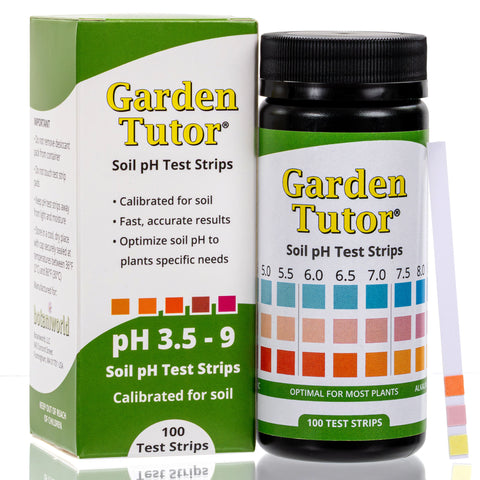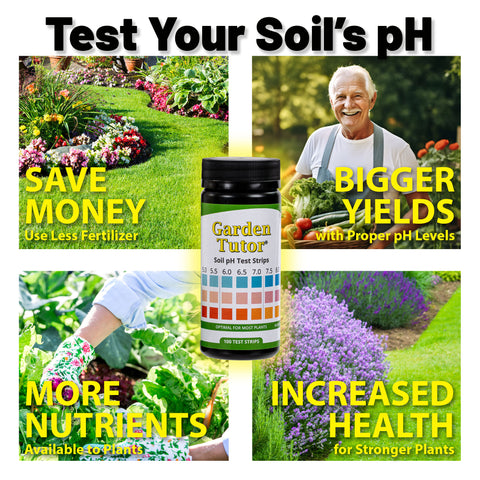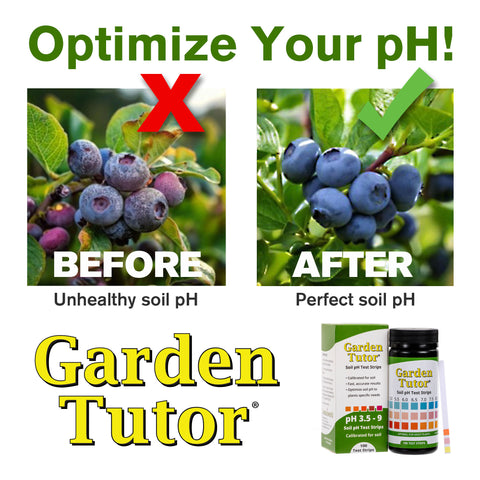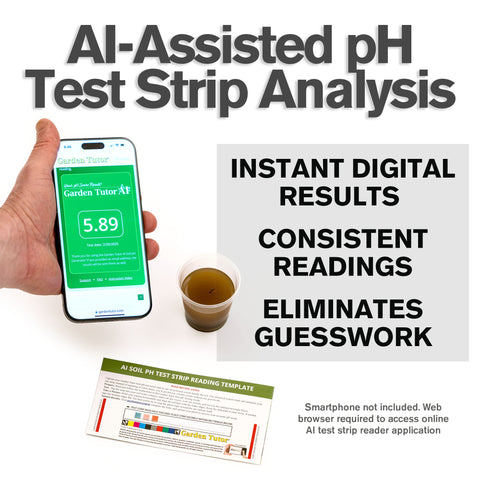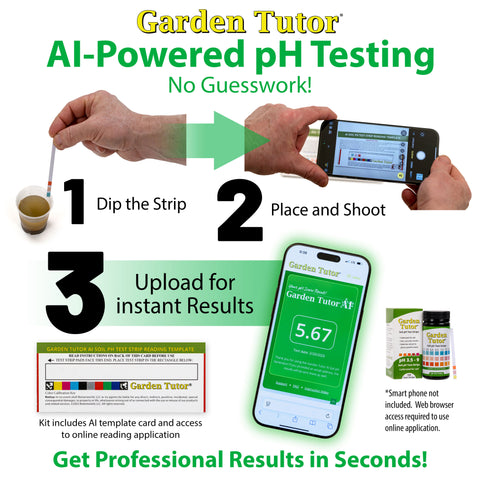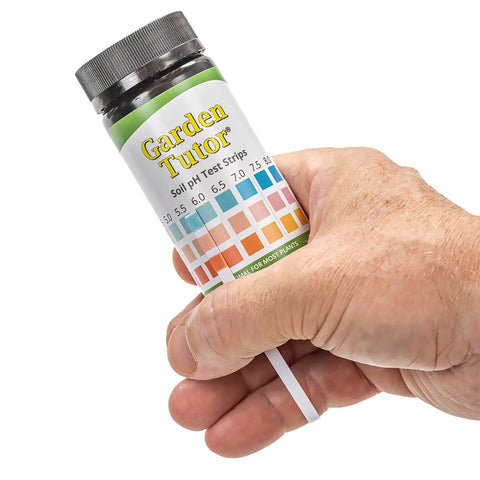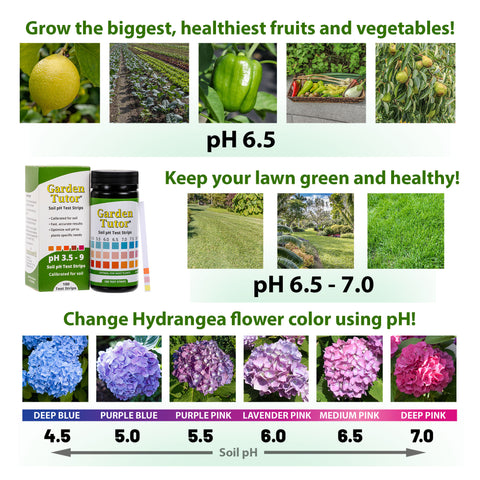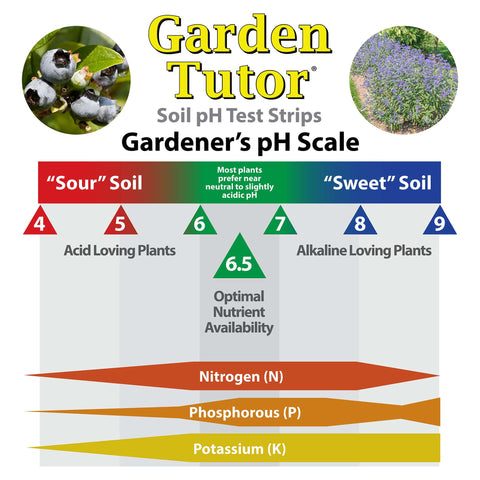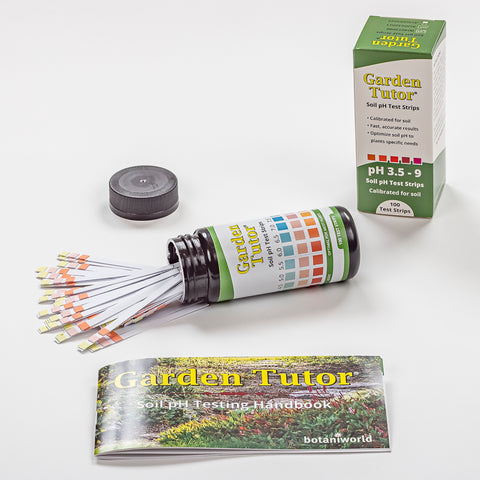Garden Tutor Soil pH Test Kit, 100 Test Strips & AI Web Reader
Accurately test soil pH at home with Garden Tutor Soil pH Test Strips, specially calibrated for precise readings. No need to guess or use unreliable "universal" test strips. Our web-based AI reader provides lab-grade results in minutes, allowing you to adjust soil and promote healthy plant growth.
- PROFESSIONAL-GRADE ACCURACY: Engineered specifically for soil pH testing, delivering results quickly (typically in about 60 seconds). With a 3rd Generation, 3-pad design, our test kit ensures consistent, repeatable results for all your lawn, landscape and garden needs
- WEB-BASED AI READER TECHNOLOGY (UPGRADED FOR 2025): Enhance your testing experience with our web-based tool - no app downloads or signups required. Simply take a photo of your test strip against our template, upload it, and get instant pH results with digital precision.
- DESIGNED IN AMERICA: Created by Garden Tutor, an American brand founded by gardeners who understand your needs. Our design focuses on simplicity, accuracy, and solving real gardening challenges.
- COMPLETE SOLUTION: Includes 100 test strips, full-color pH testing handbook, AI test strip reader template, and online lime and sulfur application estimator—everything you need to adjust your garden's soil pH with ease.
- OPTIMIZE YOUR SOIL: Proper soil pH is essential to unlock the nutrients in your soil and make them available to your plants. If your soil is too acidic or too alkaline, your plants won't thrive.
-
TRUSTED BY 100,000+ GARDENERS: With over 100,000 kits sold and 3,400+ reviews, Garden Tutor pH test strips have helped gardeners across the country optimize their soil for better plant growth.
Products built by gardeners for gardeners
Why does soil pH matter?
 |  |  |
Most plants prefer a pH of 6.5Soil pH determines its acidity (sourness) or alkalinity (sweetness). For gardening, most plants prefer a soil pH between 6 and 7 with 6.5 being your target soil pH. | Maintaining proper soil pH prevents "nutrient lockout"If soil pH is too extreme for plants, it creates an unhealthy environment by limiting the nourishment that is available to the plants. | Maintaining proper soil pH helps promote growth and vigorPlants under stress are much more prone to poor health. Keeping pH at the proper level for the plants in your garden is one way to help. |
 |  |  |  |
Step 1: Collect a representative soil sampleUsing a garden trowel or spade, dig a small hole (about 6 inches deep) and slice a sample from the edge of the hole as if you were cutting a thin slice of cake. Put this sample in a bucket or large container. Repeat this process a few times around your garden site. Mix soil samples thoroughly and remove any stones, grass, etc. | Step 2: Add soil to a cup or testing jarUsing a tablespoon put 8 level tablespoons (4 ounces) of the mixed soil into a clean plastic cup or testing jar and thoroughly mix with 8 level tablespoons (4 ounces) of water for 30 seconds. | Step 3: Dip strip into solutionFor best results, let the soil/water solution sit for 20 minutes before testing. Briefly mix solution one more time and wait 10 seconds for the soil to settle a bit and then dip one pH test strip into the solution. Hold the strip in the solution for 3 seconds. | Step 4: Match color pads to color chartRemove the pH test strip and shake it vigorously to remove any dirt on the pads. Depending on soil pH, some or all the color pads will change color. Match the resulting color(s) with the color chart that accompanied the pH test strips to determine your soil pH. If you are having difficulty choosing a pH, use our simplified chart to zero in on your soil pH. |
If you are having trouble interpreting you soil pH results we are always glad to review a picture and give you a reading. Just contact us and send us an email and pictures of a recently used pH test strip.
For further details and resources go to our dedicated pH test support page.
